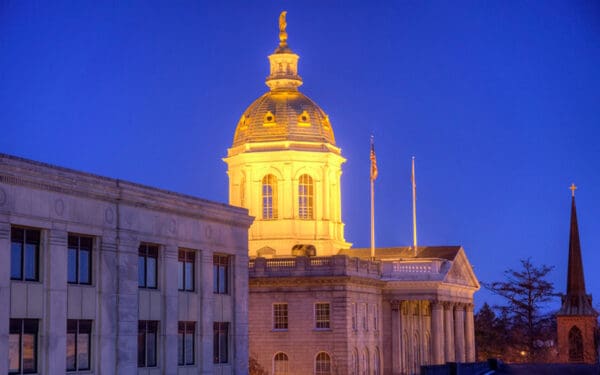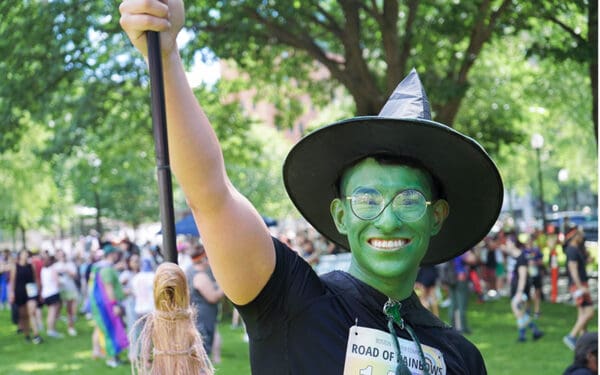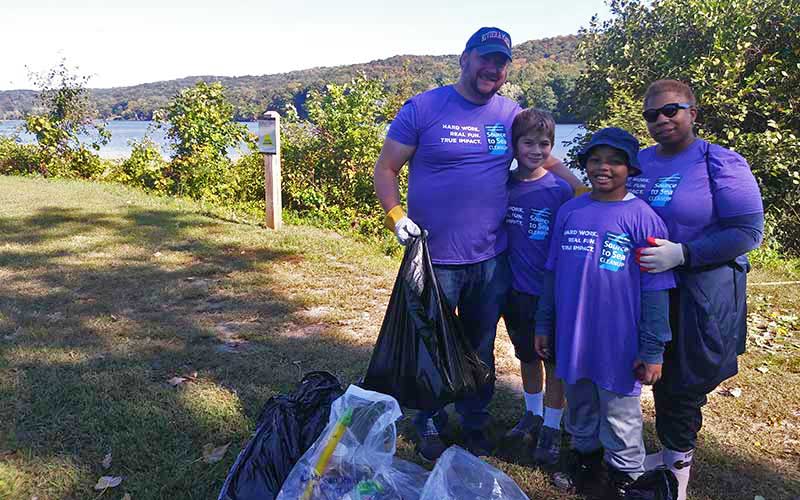
Community members remove trash from Connecticut River during annual Source to Sea Cleanup event. Photo: Connecticut River Conservancy
A version of this blog was originally posted on Connecticut River Conservancy’s website.
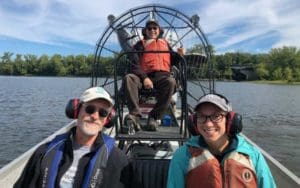
My first day on the job as Connecticut River Conservancy’s newest River Steward was a whirlwind – literally. We got an early morning start with our friends at the U.S. Fish & Wildlife Service for a windy trip up and down the Connecticut River on their airboat. As we sailed past boathouses, rowers, and park-walkers, the reasons why I accepted this job became clear. Simply put, the Connecticut River is not only beautiful but also enhances the lives of those who live within its valley and take advantage of all it has to offer.
My reverie, however, was short-lived. As we came to our first stop and dismounted the boat, I was shocked and disappointed to see the amount of plastic bottles and nips littering Connecticut’s shoreline. This experience was repeated a few weeks later when we hosted our 23rd annual Source to Sea Cleanup – an ongoing effort to keep New England’s longest river (spanning across four of the region’s six states) free from litter.
Alongside volunteers, I found myself picking up more plastic beverage containers than I ever thought possible. In just a few hours, we removed more than 5,000 beverage containers clogging rivers and streams across the Connecticut River Valley.
Beverage Containers are Too Often Found in Waterway Cleanups
Plastic bottles and beverage containers are far and away the most common items we find polluting our waterways – and not just along the Connecticut River. The Ocean Conservancy classifies plastic bottles as one of the top ten items most frequently found during trash cleanups throughout Connecticut. In 2019 alone, the Ocean Conservancy collected over 10,000 beverage containers across the state.
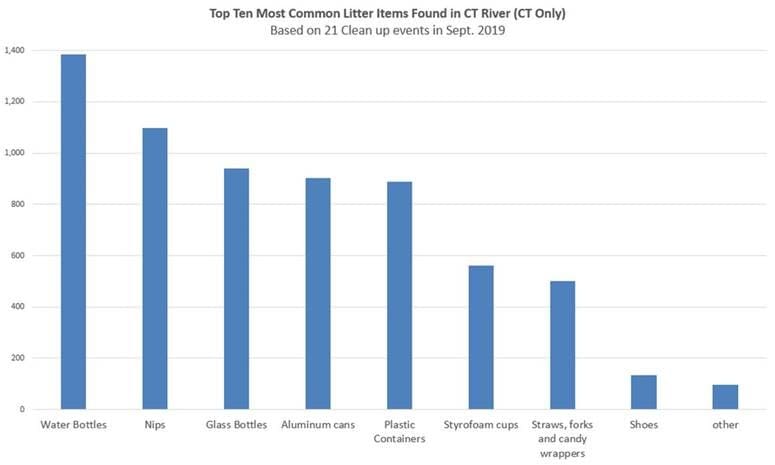
To add insult to injury, many of these beverage containers are too contaminated to recycle and end up being buried in landfills or burned in incinerators – both of which emit toxic pollution into our environment and communities.
Modernized Bottle Return Programs are the Solution
One of ten U.S. states with a bottle return program, Connecticut has the tools in place to solve beverage container pollution. Yet, with the country’s lowest redemption rate (at just 50%), the state’s bottle return program is struggling. This is largely because the current bill does not include beverages like sports drinks, which have grown in popularity since the law was first passed in 1978.
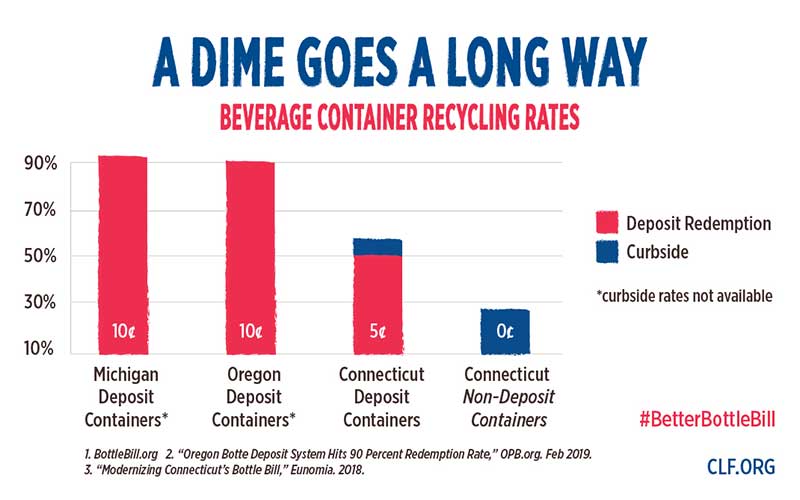
On average, states with bottle return programs (also known as the “bottle bill” or deposit-return), collect almost three times as many cans and bottles for recycling than states without. When Oregon increased its deposit from 5 to 10 cents in 2017, redemption rates skyrocketed to 90%, up from 64% in 2016.
What’s more, bottle return systems depend on a network of redemption centers – convenient drop-off locations for consumers to bring back their empty containers and get their deposit back. To operate, each of these locations is paid a small “handling fee” by beverage producers for costs like storage and labor. But as the “handling fee” hasn’t been raised in over 30 years, Connecticut’s redemption centers are rapidly closing down.
What we need is for Connecticut to modernize its bottle bill by increasing the deposit from 5 to 10 cents, expanding the bill to include new types of containers, and giving raises to redemption centers. Updating the bill to include these improved policies is essential to reducing river pollution.
It’s Time to Stop the Trash Before it Starts
With over 3,600 volunteers getting dirty to clean up rivers across four New England states, Connecticut River Conservancy’s 2019 Source to Sea event was the largest we have ever hosted. Although our efforts were a huge success, it is my hope that our cleanups, rather than growing, become obsolete.
Let’s stop the trash before it starts – take action and call your legislator today in support of a modernized bottle bill. You can also follow the “CT Bottle Bill Works” Facebook page for updates.
Stand with us to protect the Connecticut River.


